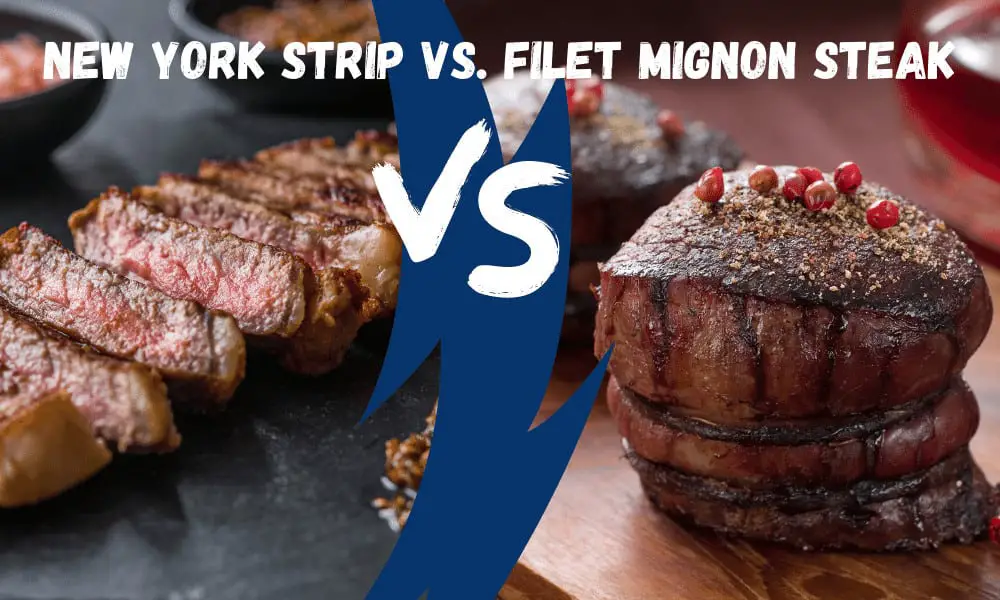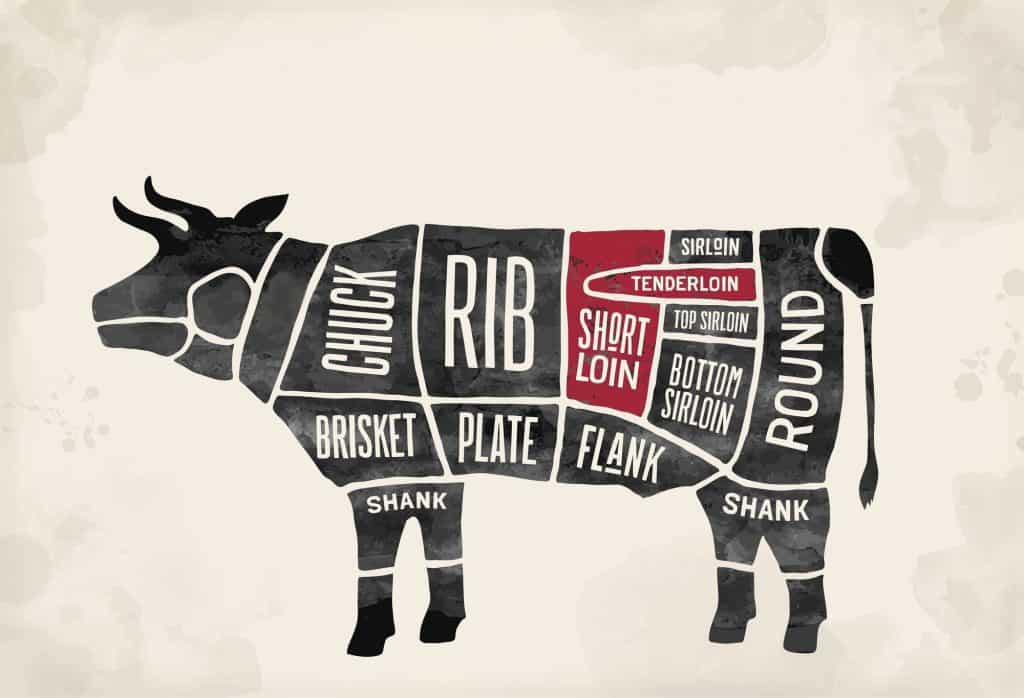You’re sitting at a steakhouse perusing the menu. All these glorious steak options are beaming at you, from a porterhouse to a ribeye steak, to the New York strip and the filet mignon.
So, how will you decide exactly which steak is going to fit your appetite?
Well, every steak has its place. But, every steak also has its key differences which sets them apart from one another, from taste, texture, and best preparation methods.
Here we go through the main differences of the New York strip and filet mignon, what each steak is best known for, and which one is better for you. Here on in you’ll be more informed while making your decision at the local butcher or steakhouse.
New York Strip Steak Vs Filet Mignon

Although both the New York strip and filet mignon are prized as some of the most flavorful and luxurious steaks, they are completely distinct cuts of beef.
Sure, they are both from the same general area of the cow, but they are vastly different in size, shape, texture, and most importantly, taste.
The New York Strip has a bit more fat which tends to make it slightly juicier and more tender, and due to its shape, it’s a bit easier to cook.
Whereas the filet mignon is one of the leanest cuts of beef, takes a bit more precision to cook it to perfect steak doneness, but can turn out to be a decadent centerpiece when done right.
You can serve filet mignon as individual steaks, or cook the whole beef tenderloin when cooking for a crowd.
Let’s take a closer look.
Where They Come From

Although the NY strip and the filet mignon come from different parts of the cow, they’re actually pretty close to one another, separated only by a single bone. This bone is known as the porterhouse bone or the T-bone due to its shape.
The NY strip is in front of the tenderloin and sirloin of the cow, which is an area known as the “short loin”.
The filet mignon actually belongs to the tenderloin itself, which is one of the most prized parts of the cow, lying in the middle between sirloins and the short loin.
Size and Shape

Since the short loin is essentially one large muscle in the cow, known as the “longissimus”, the meat from the NY strip is usually larger and has a single cut look. Hence why it’s called the New York “strip”.
On the other hand, the filet mignon is a part of a much smaller and thinner muscle. The filet mignon is just a section of the whole tenderloin, cut into an evenly sized piece for a perfect one-serve steak.
Texture
The texture of beef, whether it’s tough or tender, stems from how much strain and activity was placed on that muscle of the cow during its lifetime. This impacts the amount of fat and connective tissue in the muscle, as well as the size of the actual muscle fibers.
This is fundamentally why there are vast different textures when it comes to textures. From the lean hanger steak or skirt steak, to the fatty brisket, to the well balanced and well marbled sirloin steak, rib eye or porterhouse.
The New York steak is known to have much more fat than the filet mignon, making the texture a little tougher naturally, and the beef tenderloin or filet mignon has much less fat and very thin muscle fibers, making it have a butter-like texture.
Having such little fat does mean that the filet mignon can more easily get overcooked though, or become tough!
Taste
The actual taste of steak is made up of the savory protein, and the juicy and delicious fat running through it referred to as marbling.
So, when you’re comparing the New York strip to the filet mignon, both can be to die for, but each have their own unique profiles.
In my view, the New York strip is more of a classic steak, one that you can eat with just salt and pepper. Sure, you can jazz it up with a nice garlic butter or other sauce, but it’s absolutely amazing even by itself.
Filet mignon is incredible when it’s cooked correctly. Although you can still eat it with just salt and pepper, it’s normally served with much more decadent ingredients to bring out it’s flavors, like red wine jus, mushroom sauce, or sweet vegetables like carrot etc.
Cooking Method
Both steaks should be cooked at a high heat initially to get a good sear on the outside, slightly caramelizing the fats and protein on the outside. It also gives the steak that professional steakhouse look.
But, due to its size and shape the New York strip is much easier to cook. The filet mignon, because it’s much thicker, is harder to achieve a good sear on all sides, as well as keep it perfectly cooked in the center.
For this reason it’s always best to sear the filet mignon, but then finish it in the oven or at a much lower heat over time to ensure it’s cooked evenly.
The New York strip steak can be cooked this same way, but you can more easily cook it solely in a skillet or on a grill, without needing to finish it in the oven etc.
Both steaks can be reversed seared to an incredible result too.
Which One Is Best?
So, by now I’ve talked up both the New York strip steak and the filet mignon, so which one is best for you?
Well, if you’re looking for a more classical steakhouse steak then the New York strip is literally one of the tastiest, most tender, but juicy steaks you can find.
However, if you want something a little more decadent, subtle in it’s flavor, and melt-in-your mouth tender then look no further than the filet mignon.
The Final Touch
So, next time you’re at a steakhouse and everyone is umming and ahhing over which steak to choose, you should now be equipped to make the right decision.
Heck, you might even be able to convince others to make the right choice too!
In short, the New York strip is a tasteful classic steak, and the filet mignon is a bit more decadent, soft, and has more of a subtle steak flavor.
Really, you can’t go wrong with either of these steaks, and the true best choice will come down to your individual preferences. Let me know which one you prefer!


